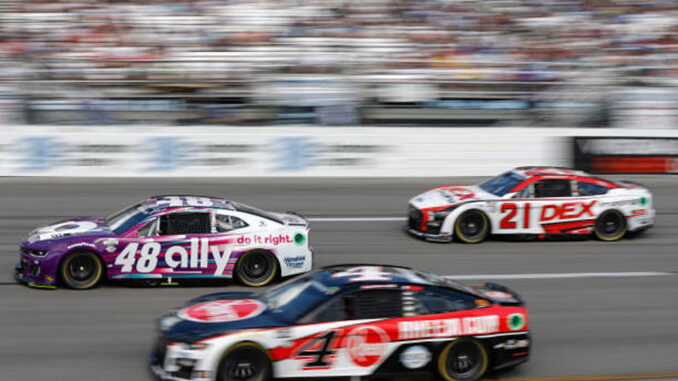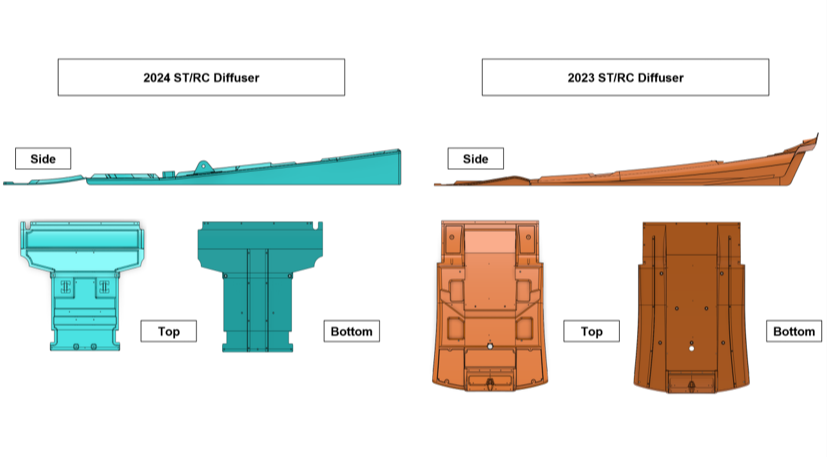
NASCAR’s Next Gen racecar has been underwhelming. Though the car’s setup design has increased its ability to follow cars without being blocked by air on larger intermediate tracks, racing on the short tracks and road courses has suffered in the Cup Series, becoming drawn-out strategy affairs with little on-track passing.
The sanctioning body hopes it’s now found the cure: starting with the first points-paying short track race of the 2024 season, all short tracks under a mile long except Bristol and Dover and all road courses will feature a new rules package.
Chief among the changes is a rework to the diffuser with a simplified design with simplified diffuser strakes. The changes also include a larger 3-inch spoiler, up from the previous two inches, no engine panel strakes, and retention of the splitter stuffers from last year’s rules package that direct the airflow under the car.

These changes will not debut the first time the cars take to the track for the 2024 season-opener Busch Light Clash at the Coliseum, a non-points short track race, on February 4th. Instead, the sanctioning body will do a wind tunnel test on February 13th to ensure the changes affect all three manufacturers equally and a test on track at Phoenix Raceway on February 20th.
Phoenix is where the package was initially developed. December tests on the diffuser produced positive results.
Eric Jacuzzi, NASCAR Vice President, Vehicle Performance: “At the test, we noticed an improvement in traffic. The car did not lose rear downforce when it yawed, which is an issue we fight with the current car,” explained Eric Jacuzzi, NASCAR Vice President, Vehicle Performance.
“The drivers would be able to slide around more on the short tracks and really have to be less careful about putting power down. We felt that would be a benefit, and that was the big takeaway from the driver feedback. At the test, they felt they could really tell that it was more forgiving. They felt they could slide the car.”

It was a better result than the test earlier in the year at Richmond Raceway that focused on the splitter. In that test, a smaller splitter took away too much downforce and stability, causing even more problems for pack racing, and plenty of ride height experimentation did little to fix those problems.
Something that did carry over from both the Richmond and Phoenix tests is improved tires.
“Goodyear, I thought, did a really good job at the tests,” Jacuzzi told NASCAR.com. “We had asked them — and the drivers did as well — to be extremely aggressive in bringing compounds and options, and they did do that.”
“I think the one key thing that we’ve seen at Phoenix and at other locations is increasing the tread gauge, so actually making the tread of the tire a little thicker. … But adding that thickness, it seems to be every time we’ve done it has been very favorable from the driver standpoint, and Goodyear believes that added thickness will help contribute to tire fall-off.”

Putting it all together, the sanctioning body hopes that the changes will improve the racing, and Jacuzzi notes that his team will continue to observe and experiment.
It might not be enough with drivers and fans calling for more horsepower, something that was reduced in the Next Gen car for reasons of cost and parity, but it is certainly a good sign that the sanctioning body is attempting changes whether or not they end up being effective.
- Denny does Dover after surviving hard-charging Kyle Larson to tame the Monster - April 28, 2024
- The Monster Mile brings short track style to high banking - April 25, 2024
- Sam Mayer scores Xfinity win by an inch in photo finish at Texas - April 13, 2024